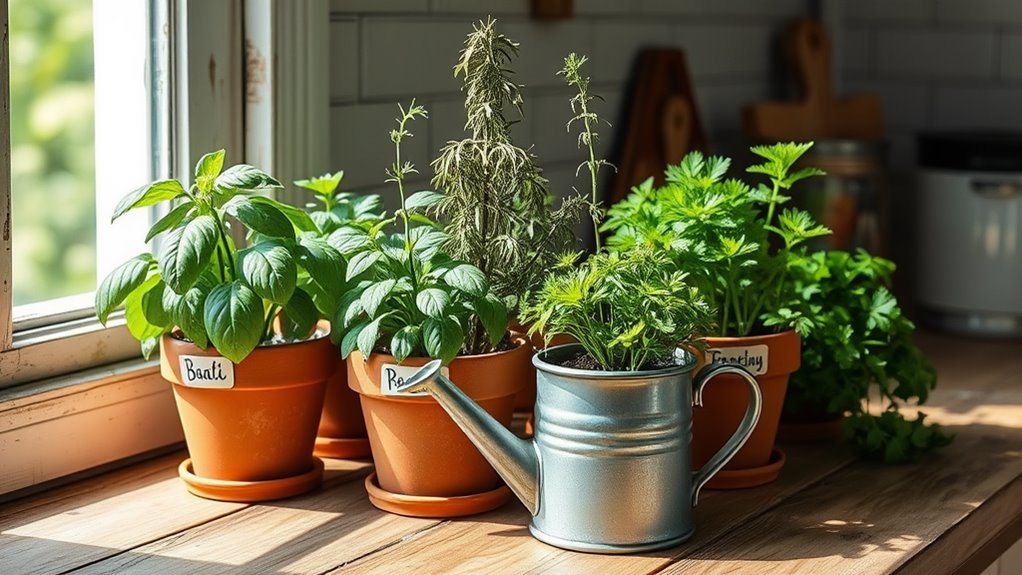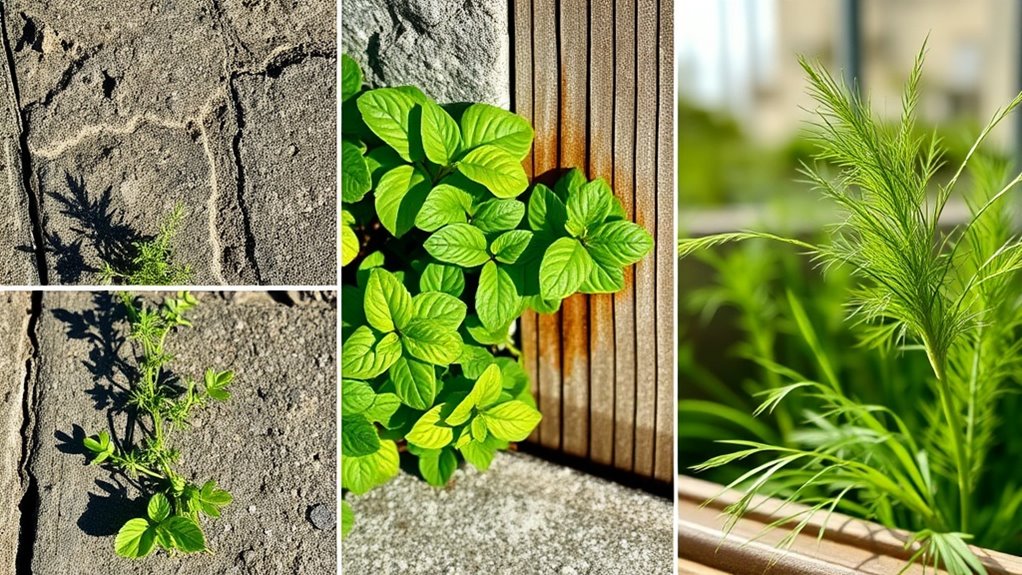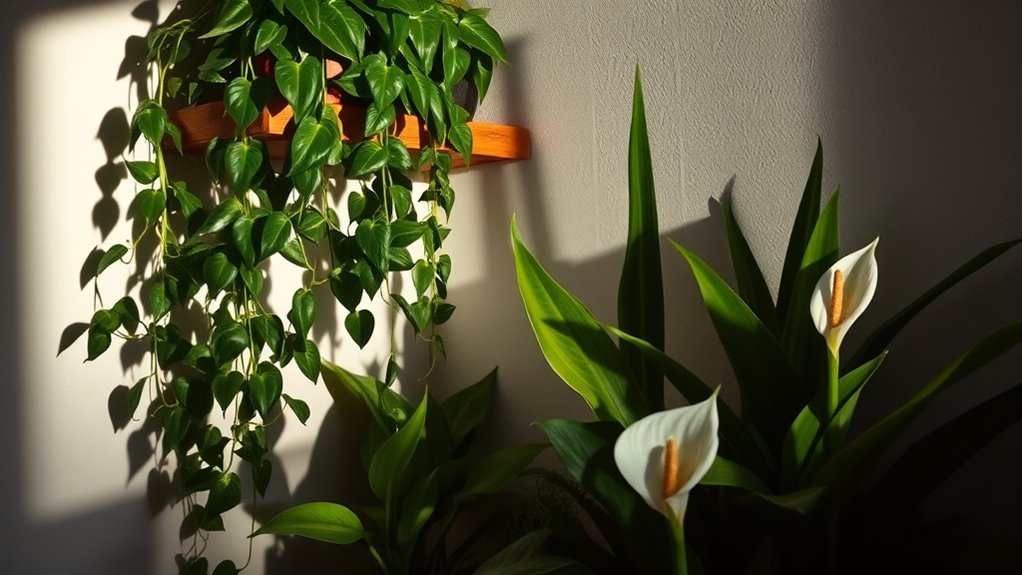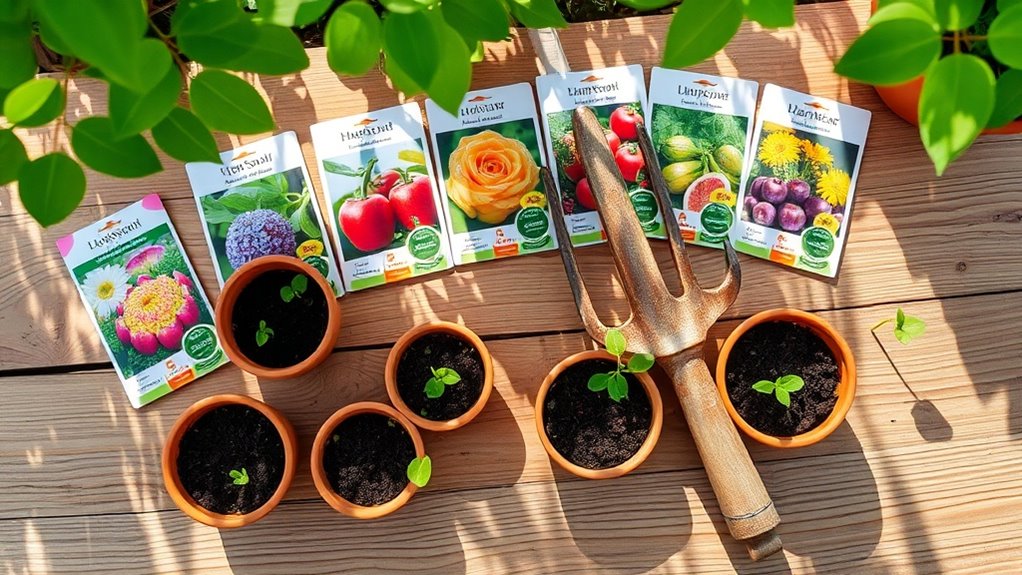Build a Mini Herb Garden on Your Kitchen Counter
Transforming your kitchen counter into a mini herb garden is a delightful way to enhance your culinary experience. By choosing the right herbs and gathering a few essential materials, you can easily create a vibrant space for fresh flavors. The process is straightforward, but the rewards are plenty. Let’s explore how to select your herbs and the key steps to ensure a thriving garden right in your home.
Key Takeaways
- Select compact herbs like basil, parsley, and cilantro that thrive in small spaces and suit your cooking style.
- Use quality potting soil and small stones for drainage to keep your herbs healthy.
- Choose containers with good drainage; terracotta or ceramic pots are excellent for retaining moisture.
- Position your mini garden near a window to ensure at least six hours of sunlight daily.
- Water regularly, keeping the soil moist, and harvest when herbs reach about 6 inches tall for optimal flavor.
Choosing the Right Herbs for Your Mini Garden
When selecting herbs for your mini garden, how do you choose the best ones for your space and culinary needs?
Start by considering the herbs you use most often—basil, parsley, and cilantro are popular choices for a kitchen herb garden.
Think about your cooking style; if you love Italian dishes, add oregano and thyme.
Ensure your selected herbs thrive in your available light and space; some prefer full sun while others can tolerate shade.
Finally, consider the growth habit of each herb; compact varieties work best in small containers. An effective way to maximize your space is to choose compact varieties that are specifically suited for container gardening.
With these tips, you’ll create a thriving mini herb garden.
Gathering Necessary Materials
After choosing the right herbs for your mini garden, it’s time to gather the materials you’ll need to get started.
You’ll need potting soil, which provides essential nutrients for your plants. Grab some small gardening tools like a trowel and a watering can for easy maintenance.
Don’t forget a spray bottle for humidity, especially if you’re using indoor herbs. To promote drainage, consider picking up some small stones or pebbles.
Additionally, you may want to use proper soil moisture to ensure your herbs thrive.
Lastly, have a pair of gardening gloves handy to keep your hands clean while you work. With these materials gathered, you’re ready to create your herb garden!
Selecting the Perfect Containers
Choosing the right containers for your mini herb garden is essential to its success. Look for pots that provide good drainage and aren’t too deep. You want your herbs to thrive, so consider materials like terracotta, metal, or ceramic, each offering unique benefits. Growing micro herbs in coffee mugs can be an innovative and space-efficient option for small areas.
| Container Type | Benefits |
|---|---|
| Terracotta | Excellent drainage |
| Metal | Modern aesthetic |
| Ceramic | Retains moisture well |
| Plastic | Lightweight and durable |
Planting Your Herbs
Now that you’ve selected the perfect containers for your mini herb garden, it’s time to get your herbs in the ground.
Start by filling each container with quality potting mix, leaving about an inch of space at the top.
Gently loosen the roots of your herb plants before placing them in the soil, ensuring they’re not too tightly packed.
Dig a small hole, position the plant, and cover the roots with soil, pressing down lightly to eliminate air pockets.
Water each plant thoroughly after planting, allowing the soil to settle.
Your herbs are now ready to thrive on your kitchen counter! Remember to provide adequate light requirements to ensure your indoor herbs grow strong and healthy.
Caring for Your Mini Herb Garden
Caring for your mini herb garden is essential to ensure your plants flourish and provide fresh flavors for your culinary creations.
Water your herbs regularly, but avoid overwatering; the soil should be moist, not soggy.
Ensure they get at least six hours of sunlight daily, placing them near a window if necessary.
Rotate the pots occasionally to promote even growth.
Fertilize sparingly, using a balanced, diluted fertilizer every few weeks.
Keep an eye out for pests and remove them promptly.
Prune your herbs regularly to encourage bushiness and prevent them from becoming leggy.
In addition, consider growing culinary herbs that are well-suited for indoor environments, as they often thrive in smaller spaces.
Happy gardening!
Harvesting and Using Your Fresh Herbs
How can you tell when your herbs are ready to be harvested? Look for vibrant leaves and sturdy stems. Most herbs are best picked when they reach about 6 inches tall. Use sharp scissors to snip off the top leaves, promoting bushier growth. Here’s a quick guide to help you use your fresh herbs:
| Herb | Best Use | Flavor Profile |
|---|---|---|
| Basil | Pesto, salads | Sweet, peppery |
| Cilantro | Salsa, guacamole | Fresh, citrusy |
| Parsley | Garnish, soups | Earthy, mild |
| Thyme | Roasts, stews | Savory, earthy |
Enjoy your fresh herbs in various dishes! Additionally, consider plant selection when establishing your mini herb garden to ensure a variety of flavors and uses.





